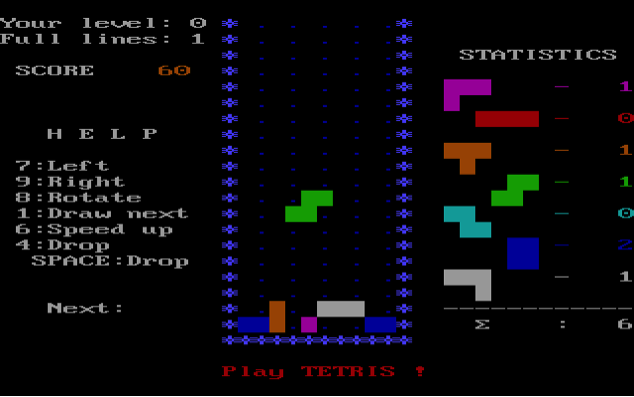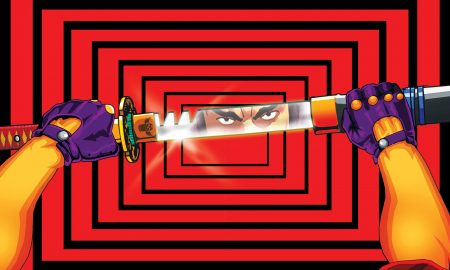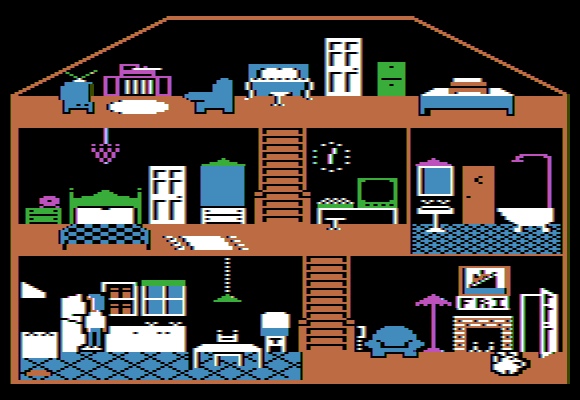

You can play a certain puzzle game on virtually any device these days and, since 2005, such is its impact on the gaming world it has sold over 100 million copies for cell phones alone. It’s also shifted some 70 million copies in its home computer form, bagged 4th place in “The 200 Greatest Game Of All Time” in Electronic Gaming Monthly’s 100th issue, and claimed 2nd place in IGN’s “100 Greatest Video Games Of All Time” in 2007. Yet despite this now remarkable history this is a game which had one very fraught first few years, the likes of which no game is likely to see ever again. Yes, it’s the legendary Tetris!
Development
The game was conceived by Russian scientist Alexey Pajitnov in the early 1980s. He based his development on tetrominoes (a geometric shape composed of four squares connected together) of which the familiar 7 shapes from Tetris are made up. His love of Tennis completed the naming process.
The Tetriminos which comprise a series of polymonios. In the Tetris world they are referred to as “I, J, L, O, S, T, Z”.
The idea was developed with fellow scientists Dmitry Pavlovsky and Vadim Gerasimov in 1984, and Pajitnov promptly created the game using the Elektronika 60 whilst working for the Dorodnitsyn Computing Centre, a part of the Soviet Academy of Sciences. The device (pictured below) was a rack-mounted unit which was part of a computing complex with a 15IE-00-013 terminal and I/O devices. Its RAM size was 8KB and it had a performance speed of 250,000 operations per second. As Tetris nears its 30th anniversary what’s clear is just how far technology has come since then!
In 1984, however, this was cutting edge development in a video game industry which was still burgeoning. After extensive development the initial designs were completed, with Pajitnov, by the summer of 1985, making the first colour version available to his friends and family. Allegedly, the game was on every single computer in Moscow within two weeks of this limited release, but as intellectual property rights did not exist in Communist Russia Pajitnov received no rewards for his work.
Gameplay… and sorting out those pesky rights
All rights went to the state, and soon after Pajitnov’s release Gerasimov ported the game over to the IBM PC, a version of which can be seen pictured below. The Russian government soon had the game on a nationwide release, and its popularity was immediate and enormous.
As anyone who has played the game knows, its appeal is immediate and its addictive qualities are universal. Despite the seemingly simplistic structure of the game, each “attempt” is different and fiendishly difficult. Whilst each game may appear to be down to pure luck as the computer arbitrarily generates Tetriminos, complex mathematical algorithms have been generated by Universities across the world. Indeed, the study of positive effects of Tetris on the human brain, and within mathematics, has been occurring regularly since the game’s widespread release. For instance, the concept of “Would it be possible to play forever” was discussed in a thesis by John Brzustowski in 1988. He decided the game was always certain to end as the S and Z Tetriminos manipulate a game in a way which eventually leads to a hole in a corner, thusly forcing the end of a game. As for health benefits, it’s understood that playing Tetris allows the brain to function more effectively.
Not that anyone in 1985 cared about this. Tetris was a huge hit and began spreading around the Soviet Union rapidly. By 1986 it was finding its way into Europe, and this is when the trouble started. As capitalist big wigs began to learn of this wonder game from Russia, so firms began to step in for the rights for home consoles. Robert Stein, president of British firm Andromeda, effectively stole the rights after some confusion with the Russian government regarding a contract. Other companies begin to pile in and the game began to be released without permission, all of which later backfired when Nintendo’s Henk Rogers, and Kevin Maxwell, fought it out the official rights in Russia. Rogers impressed the Russians enough with his charm to win the rights, and lawsuits and settlements with Stein and several other firms finally came to an end in 1989. To put it mildly this was a devastating mess of enormous proportions, with the Russians often unaware companies were releasing Pajitnov’s game! It was the naivety of the Soviet State obstinate, and unaware, of how capitalism functioned properly.
With the rights to the game Nintendo released Tetris for the Famicom (NES) and the Game Boy, the latter of which shifted over 33 million copies and, arguably, remains the most famous version of the game, not least due to its famous music.
Epilogue
Despite the tumultuous history of the game its creator now has some control over Tetris and is properly recognised as its developer. He’s been receiving royalties since 1996 thanks to the creation of the Tetris Company with Henk Rogers, the two having become good friends. He moved to America in the early 1990s to work for Microsoft, whom he left in 2005 to develop further puzzle games. You can see his official Tetris website at http://www.tetris.com.
The impact of his creation is extraordinary (the picture above shows Tetris Street in Sydney, Australia), with the familiar Tetrimonos remaining a huge commodity which pulls in millions for almost every games console, and device, on the market. From Facebook to iPhones, Europe to America, there are few corners of the world unaware of Tetris.





































You must be logged in to post a comment Login